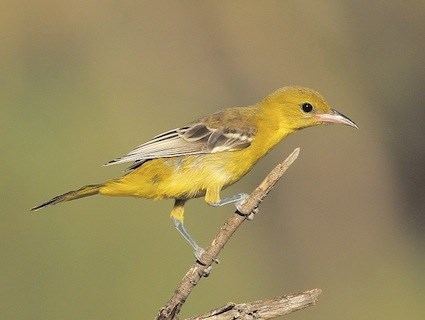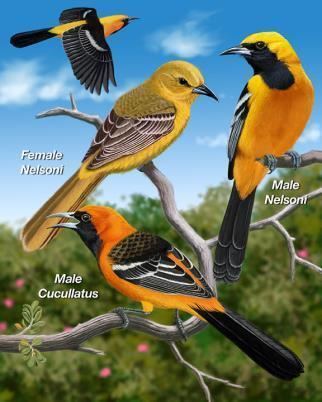Order Passeriformes Genus Icterus Higher classification New World oriole | Phylum Chordata Scientific name Icterus cucullatus Rank Species | |
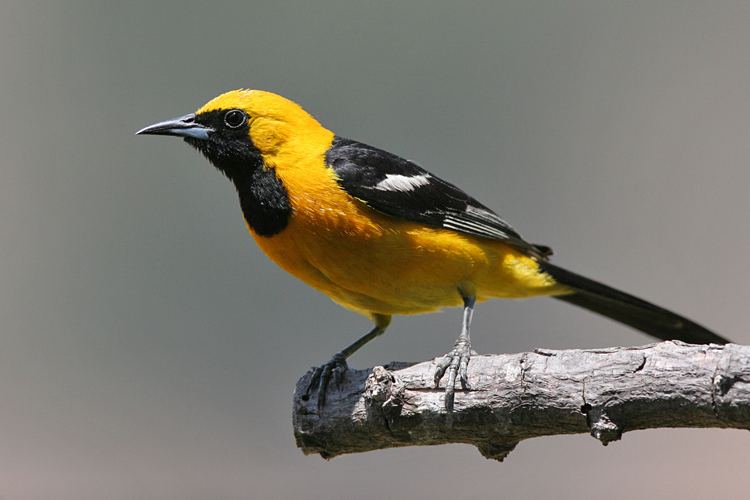 | ||
Similar Bird, New World oriole, Bullock's oriole, Scott's oriole, Orchard oriole | ||
Brilliant male hooded oriole
The hooded oriole (Icterus cucullatus) is a medium-sized New World oriole.
Contents
Hooded oriole sings
Description and ecology
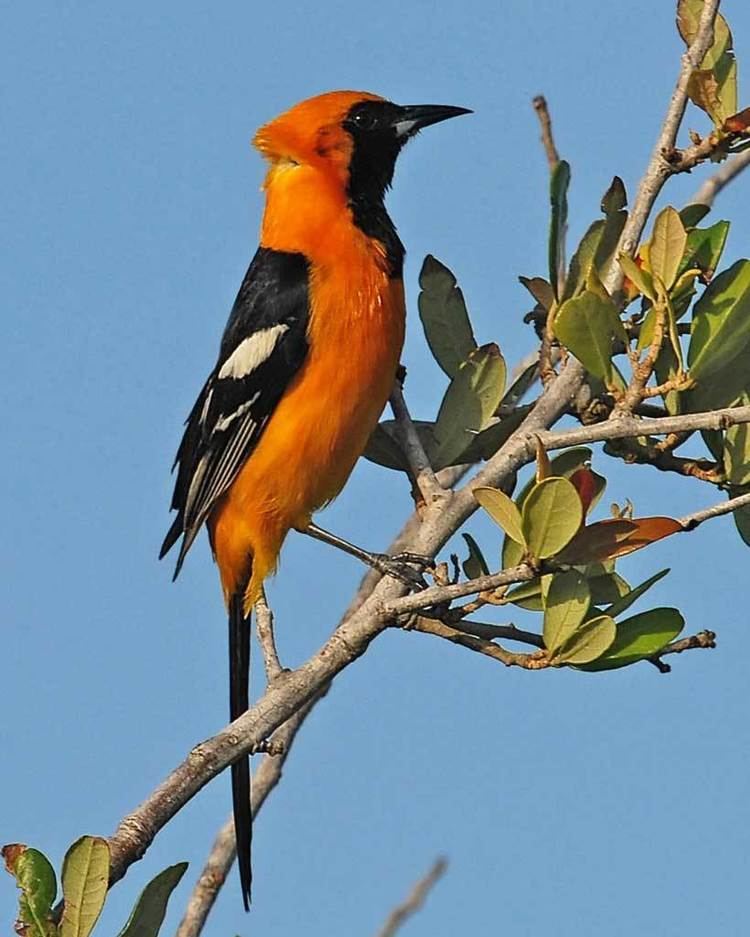
Adults have a curved bill which is completely black and white wing bars. The adult male has a deep yellowish orange head with black on the face and throat; they are black on the back, wings and tail, orange on the underparts. The adult female is olive-green on the upper parts, yellowish on the breast and belly. Their calls consist of whistling and wheets, while their song is a mixture of both.

Their breeding habitat is open areas with trees, especially palms, across the Southwestern United States and northern Mexico. The nest is a tightly woven pouch attached to the underside of a leaf or tree branch. Sometimes their nest is filled with the egg of a Brown-headed cowbird which is parasite bird that lays its eggs in other birds nests for that species to take care of.
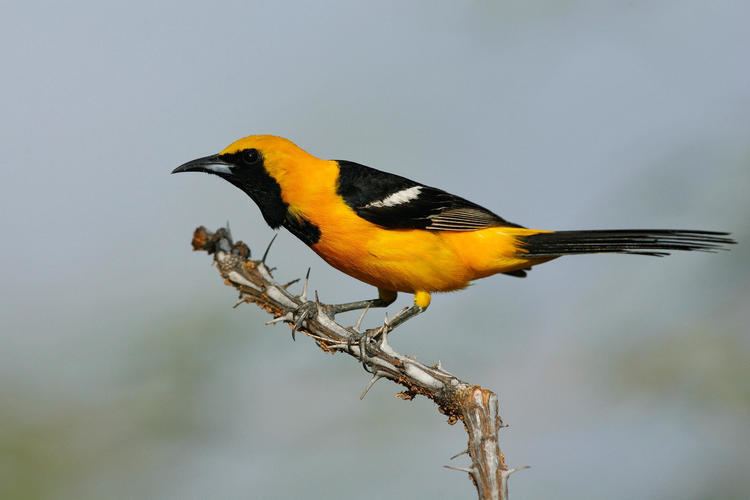
These birds migrate in flocks south to Mexico's southwestern coast; they are permanent residents in Baja California Sur, the Mexican east coast, and Belize. Some may over-winter near feeders. They can also be found in Southern California neighborhoods, but are rare in the winter.
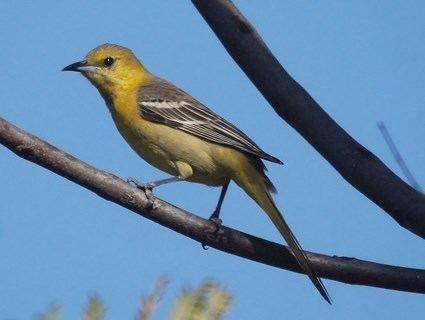
They forage in trees and shrubs, also feeding from flowers. It is a nectar robber because it pierces the base of the flower, and does not assist in pollination. These birds mainly eat insects, nectar and fruit, and will also visit hummingbird feeders and bird feeders for seeds.
